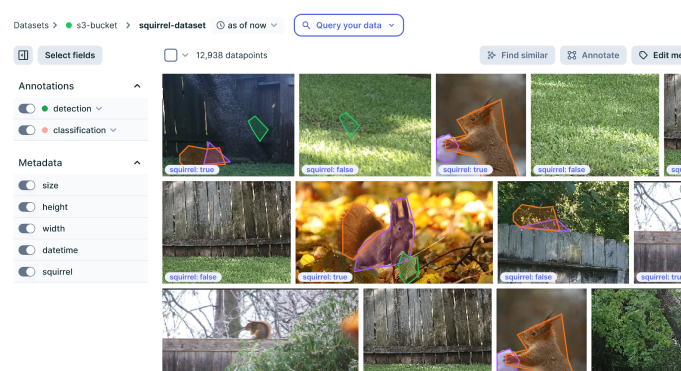
What is a Classification Threshold?
In machine learning, classification is a type of supervised learning where the goal is to assign a label to an input based on its features. It involves training a model using a labeled dataset, where the input data is paired with the correct output label. Once trained, the model can be used to predict the labels for new, unseen data. Classification problems can be binary (two classes) or multi-class (more than two classes).
Classification Threshold in a classification model, is a critical value that determines how the probabilities or scores produced by a model are converted into class labels. When a model predicts the probability of an instance belonging to a particular class, the classification threshold decides at what point this probability is deemed sufficient to assign the instance to that class. To put it simply, it is a cutoff point at which a model’s prediction is classified into one of the given categories.
Improve your data
quality for better AI
Easily curate and annotate your vision, audio,
and document data with a single platform

How does Classification Threshold work?
In binary classification, a model typically outputs a probability score between 0 and 1 indicating the likelihood that a given input belongs to the positive class. To identify what input objects belong to which class, you need to set a threshold value or cut-off value by understanding the impact of the decision boundary.
The decision boundary is a concept closely related to the classification threshold. It is the line or surface that separates different classes in the feature space. By adjusting the classification threshold, you effectively move the decision boundary, influencing which instances are classified into each category. Setting an appropriate threshold is crucial as it directly impacts the model’s performance.
Types of Classification Threshold
Here are some of the popularly used classification thresholds:
Fixed Threshold
A fixed threshold is a constant value, usually 0.5, which is used to classify the predictions. If the predicted probability is greater than or equal to the threshold, the instance is classified as positive; otherwise, it is classified as negative.
Dynamic Threshold
Dynamic thresholds are not constant and can change based on certain criteria. They include:
- Precision-Recall Tradeoff: Thresholds can be adjusted to achieve a specific precision or recall. For instance, you might set a threshold that ensures a recall of 90%, even if it lowers precision.
- ROC Curve-Based Threshold: Using the ROC curve, you can choose the threshold that maximizes Youden’s J statistic (sensitivity + specificity – 1), which is the point on the ROC curve that is farthest from the diagonal.
- Cost-Based Threshold: In scenarios where false positives and false negatives have different costs, the threshold can be set to minimize the overall cost.
Class Distribution-Based Threshold
In cases of imbalanced datasets, thresholds can be adjusted based on the distribution of classes. This means setting a higher threshold for the majority class and a lower threshold for the minority class to improve the classification of the minority class.
F1 Score-Based Threshold
The F1 score is the harmonic mean of precision and recall. A threshold can be chosen to maximize the F1 score, especially when the balance between precision and recall is critical.
Equal Error Rate (EER) Threshold
The threshold at which the false positive rate (FPR) equals the false negative rate (FNR) is called the equal error rate threshold. This is often used in biometric systems and other security-related applications.
Importance of Classification Threshold
Adjusting this threshold can have profound effects on model performance, application-specific outcomes, and overall utility in practical scenarios. This section delves into the importance of classification thresholds, examining their impact on model performance, the necessity for application-specific threshold setting, and practical examples that highlight their significance.
Impact on Model Performance
The classification threshold directly influences several key performance metrics, including sensitivity (true positive rate), specificity (true negative rate), precision, recall, and the F1 score. By adjusting the threshold, one can balance these metrics to meet specific performance criteria.
- Sensitivity and Specificity: A lower threshold increases sensitivity but decreases specificity, while a higher threshold does the opposite. For instance, in a medical testing scenario, increasing sensitivity might ensure that more patients with the disease are correctly identified, but it could also lead to more false positives.
- Precision and Recall: These metrics often have an inverse relationship influenced by the threshold. A threshold that increases precision might lower recall and vice versa. Maximizing the F1 score, which is the harmonic mean of precision and recall, often involves finding an optimal threshold.
- ROC Curve and AUC: The ROC curve plots the true positive rate against the false positive rate at various threshold settings. The area under the curve (AUC) represents the model’s ability to discriminate between classes, and the point on the ROC curve closest to the top-left corner typically indicates the optimal threshold.
Application-Specific Threshold Setting
Different applications require tailored threshold settings to align with their unique objectives and constraints. Setting the appropriate threshold can significantly enhance the model’s effectiveness in its specific application.
- Imbalanced Datasets: In cases where one class is much more frequent than the other, such as fraud detection, adjusting the threshold can help in correctly identifying the minority class instances, which are often of greater interest.
- Cost-Sensitive Applications: When the costs associated with false positives and false negatives differ, the threshold can be set to minimize the more costly error. For instance, in spam email detection, the inconvenience of a false positive (misclassified non-spam as spam) might be less severe than that of a false negative (spam not detected).
Practical Examples
The significance of classification thresholds is evident in various real-world applications. Here are a few examples:
- Fraud Detection: In financial systems, the cost of missing a fraudulent transaction (false negative) can be substantial. Therefore, the threshold is often set lower to increase sensitivity, catching more potential frauds at the expense of investigating more non-fraudulent transactions (false positives).
- Medical Testing: In medical testing, especially for critical diseases like cancer, the priority is to minimize false negatives to ensure that no potential case is missed. A lower threshold increases the sensitivity of the test, capturing more true positive cases. Although this might lead to more false positives, the consequence of a false negative (missing a disease diagnosis) is far more serious, justifying a lower threshold.
- Spam Detection: For spam detection in email systems, the goal is to filter out as much spam as possible without affecting legitimate emails. Here, the threshold is typically set to balance precision and recall, minimizing false positives to avoid legitimate emails being marked as spam, while also ensuring a high recall to filter out most spam emails.
Practical Implications of Classification Thresholds
This is time to check some of the practical implications of the classification threshold. As part of this section, let’s have a look at different tools and techniques used for finding the best classification threshold and some of the best practices that you can follow while selecting the optimal value for threshold.
Tools and Techniques
Several tools and techniques can aid in finding the optimal classification threshold:
- ROC Curve: The ROC curve plots the true positive rate against the false positive rate at various threshold settings. The point closest to the top-left corner often represents the optimal threshold.
- Precision-Recall Curve: This curve is particularly useful for imbalanced datasets. The F1 score, which is the harmonic mean of precision and recall, can be maximized to find the best threshold.
- Grid Search: A grid search over a range of threshold values can help identify the threshold that maximizes the desired performance metric, such as accuracy, F1 score, or a cost-sensitive metric.
- Cross-Validation: Using cross-validation to evaluate model performance at different thresholds ensures that the chosen threshold generalizes well to unseen data.
Best Practices and Recommendations
- Understand the Application: Tailor the threshold adjustment based on the specific needs and costs associated with the application. Consider the relative importance of precision, recall, and other metrics.
- Use Appropriate Curves: Utilize ROC and precision-recall curves to visualize the impact of different thresholds and select the optimal point.
- Validate the Threshold: Ensure the chosen threshold generalizes well to new data by using cross-validation and testing on holdout sets.
- Combine Techniques: In imbalanced datasets, combine threshold adjustment with resampling techniques to improve performance.
- Iterate and Adjust: Continuously monitor model performance and adjust thresholds as needed based on changing data patterns and application requirements.
By carefully considering these factors and using appropriate tools and techniques, practitioners can effectively set and adjust classification thresholds to enhance model performance and meet application-specific goals.
Improve your data
quality for better AI
Easily curate and annotate your vision, audio,
and document data with a single platform

